Roman Law: Introduction Origins of Roman law When

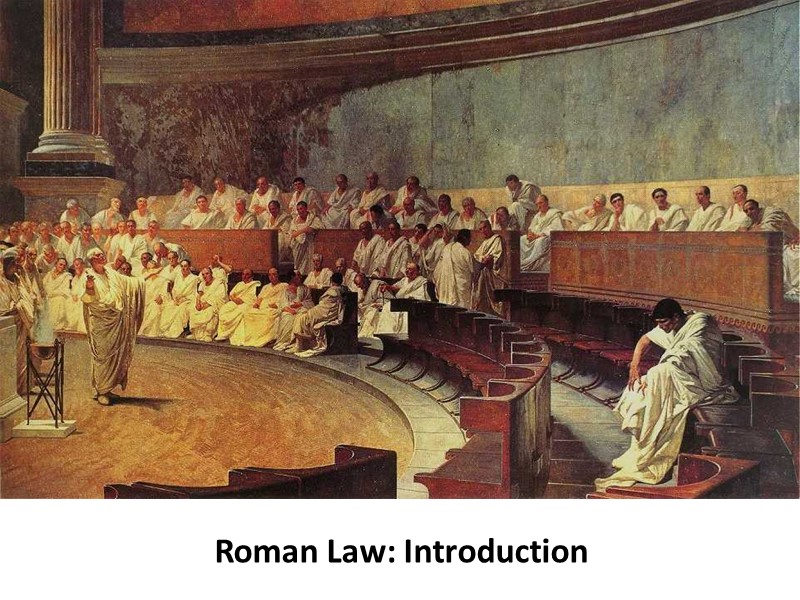
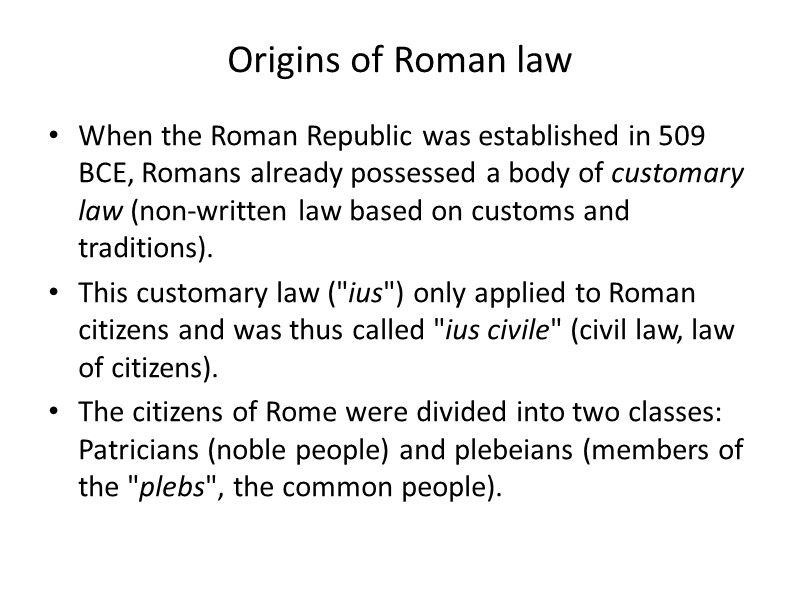
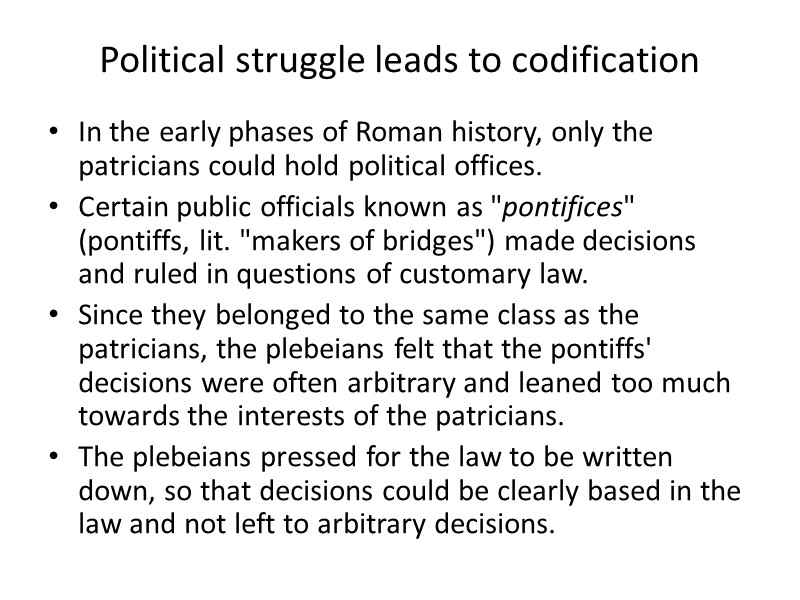
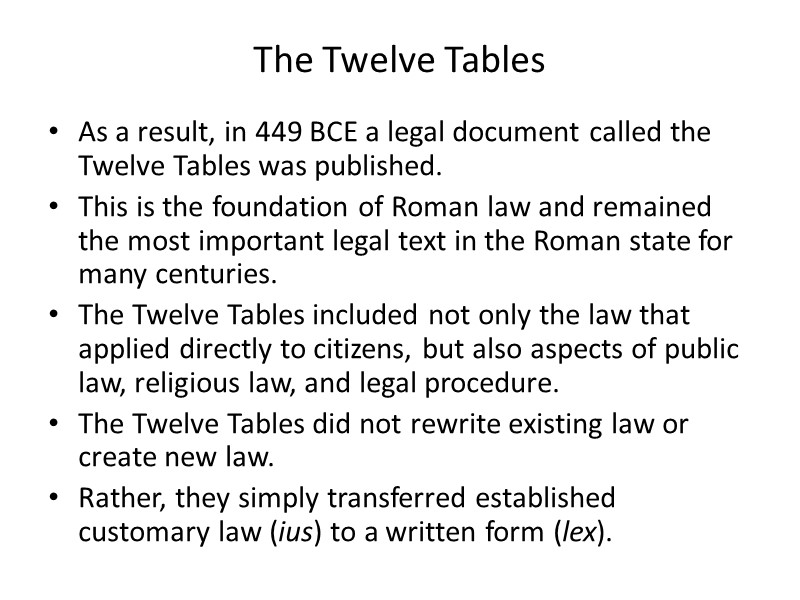
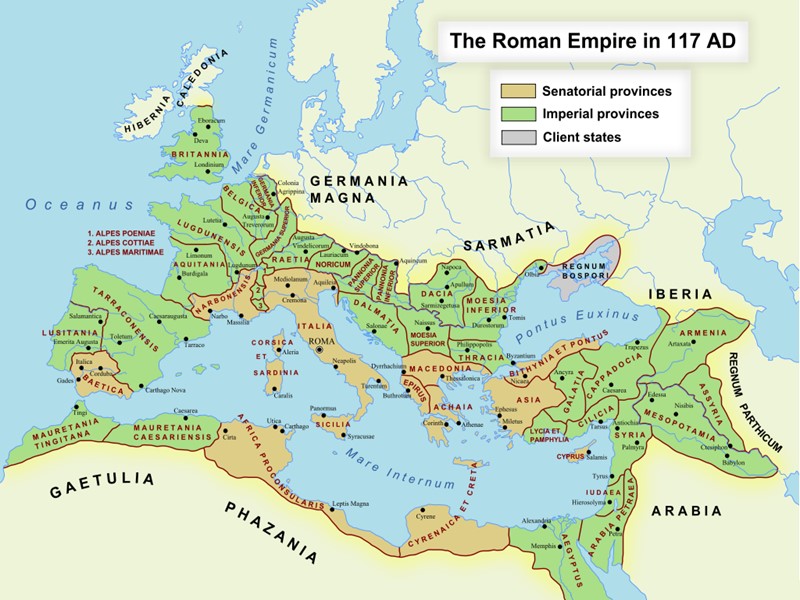
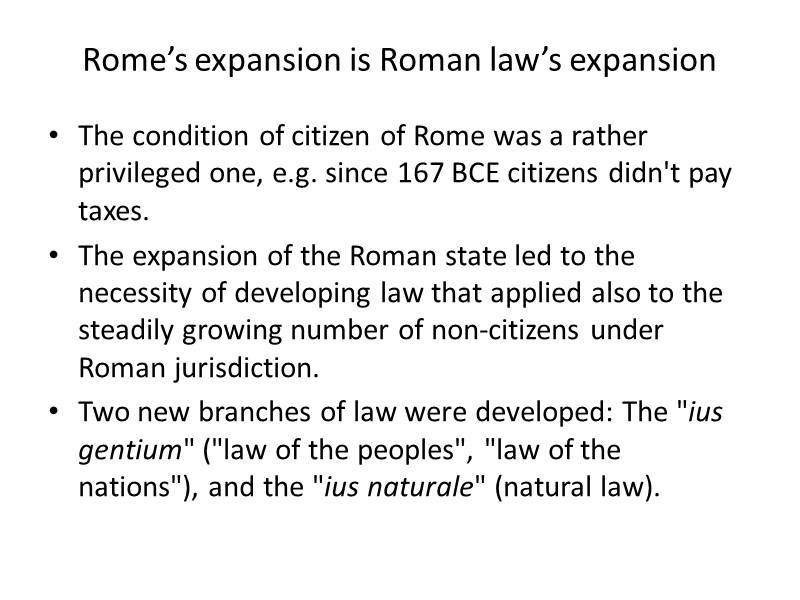
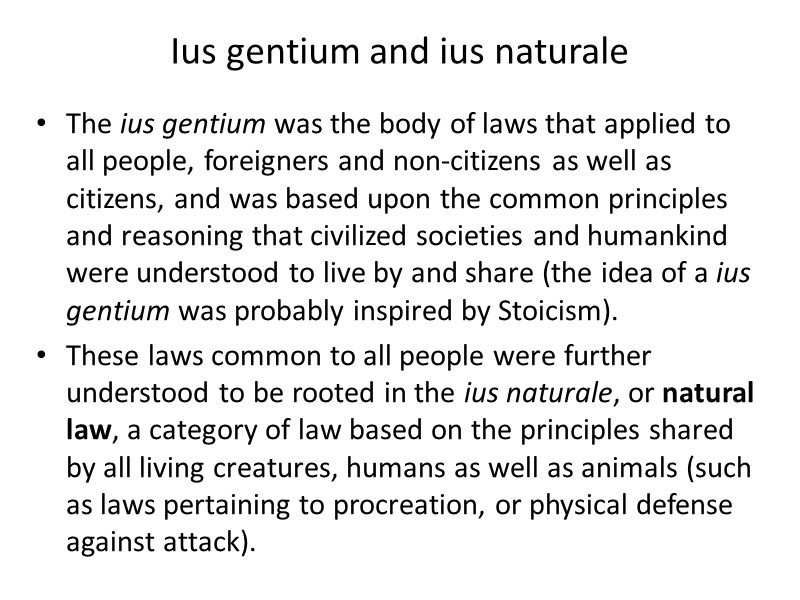
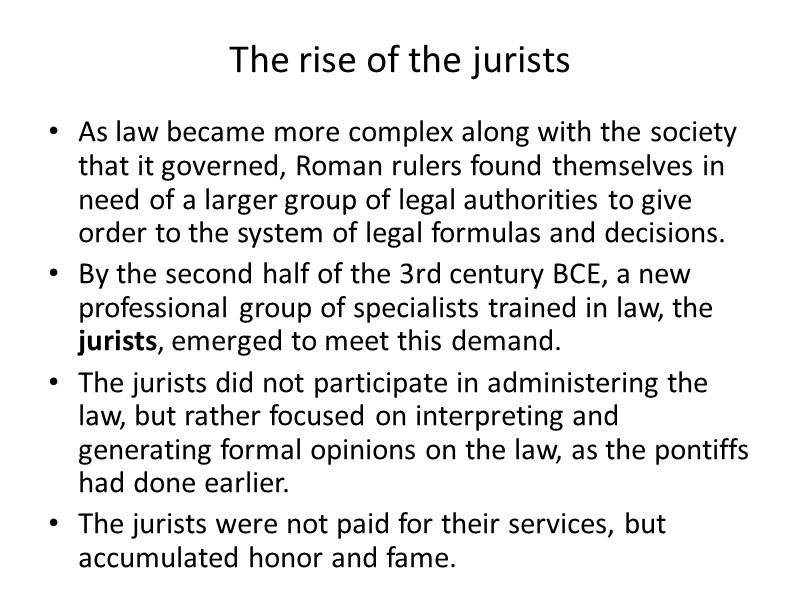
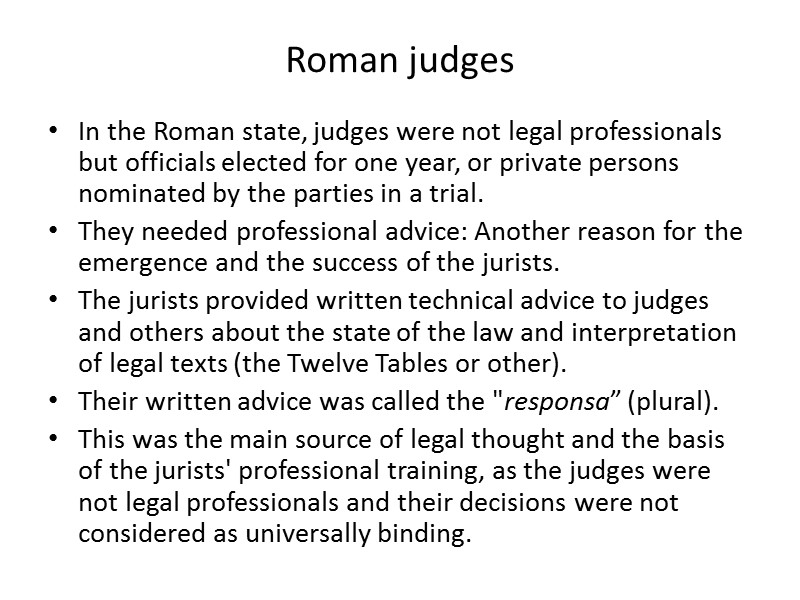
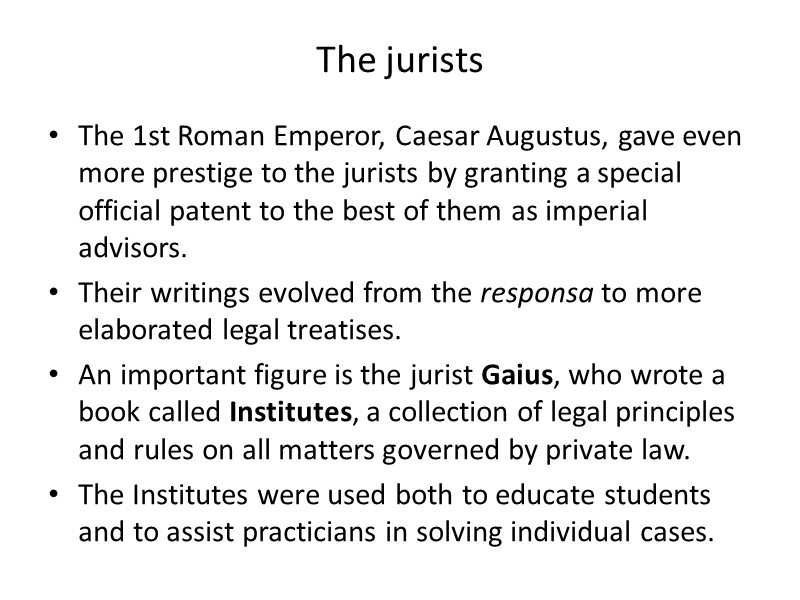
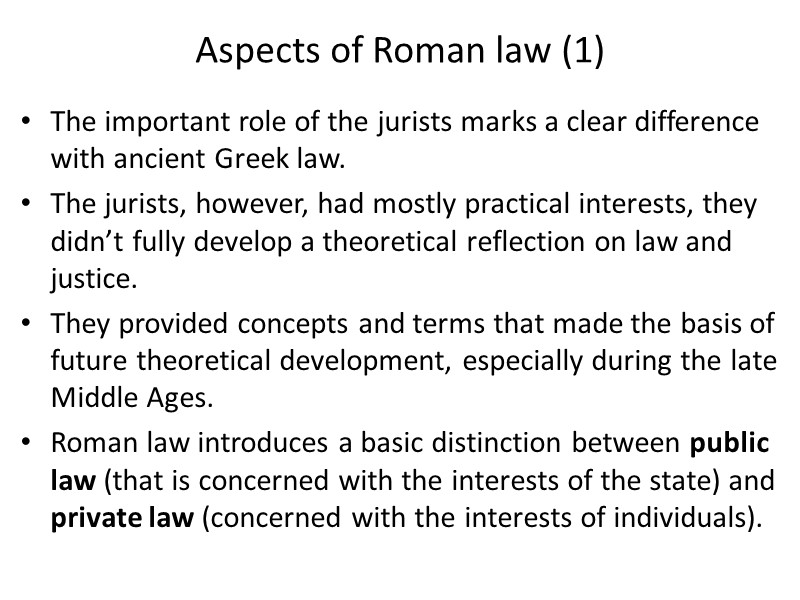
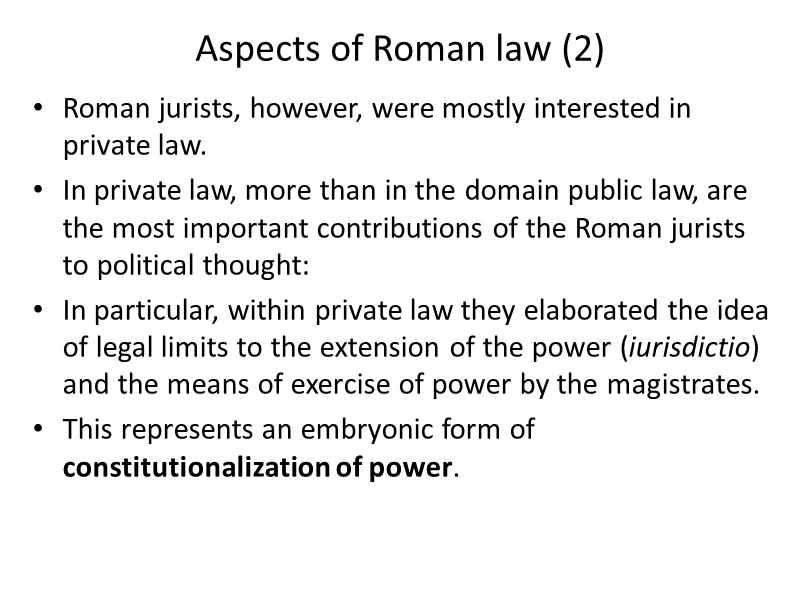

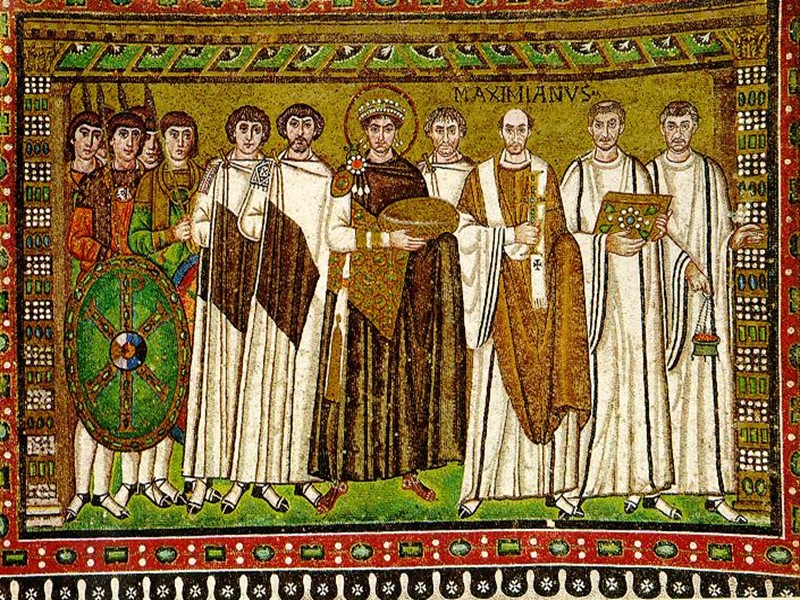
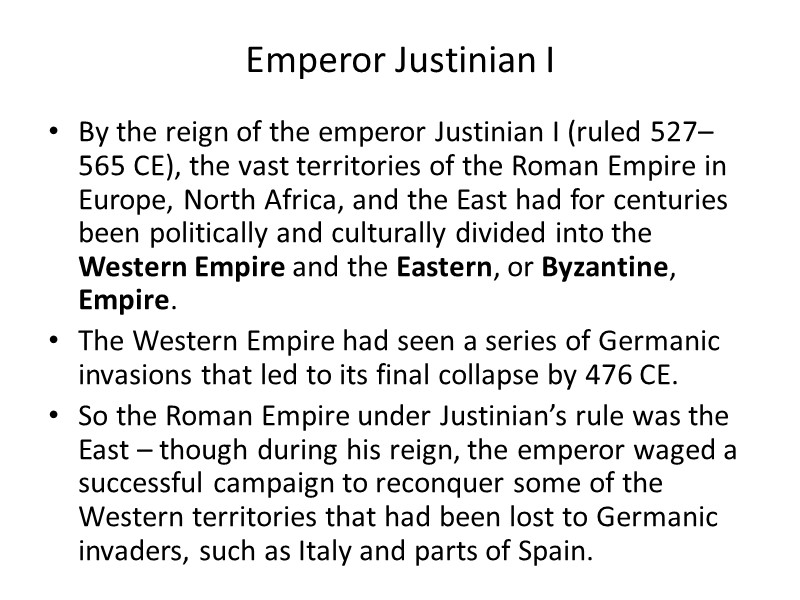
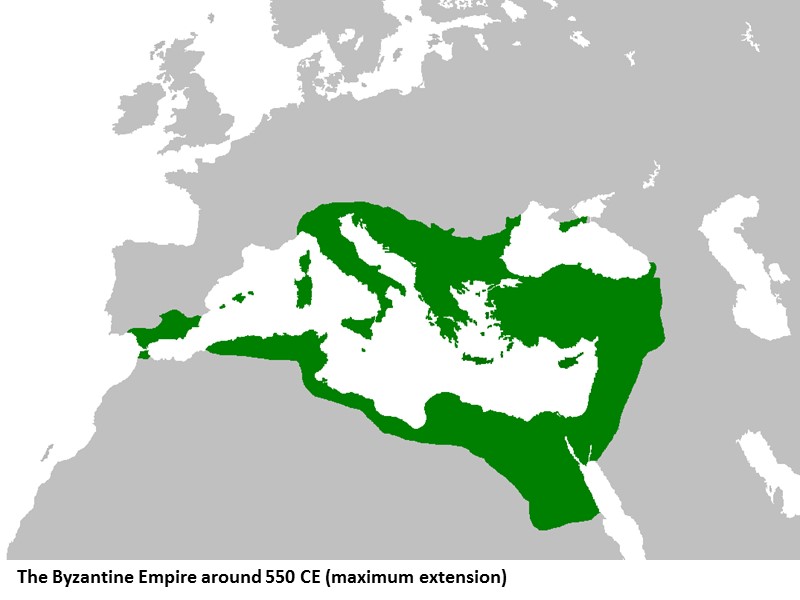
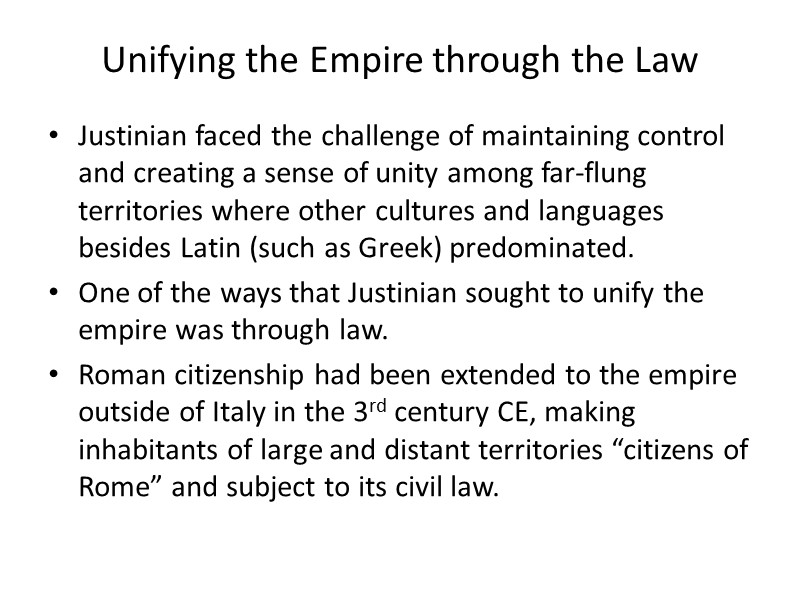
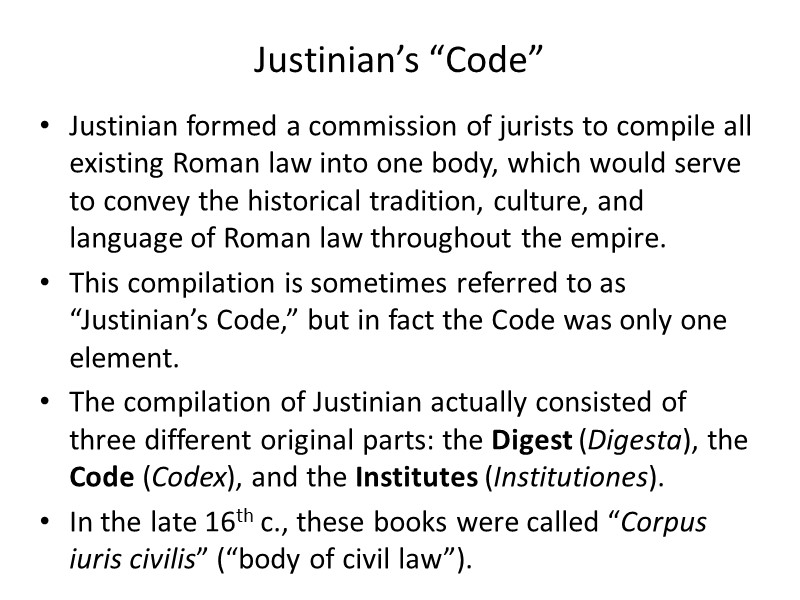
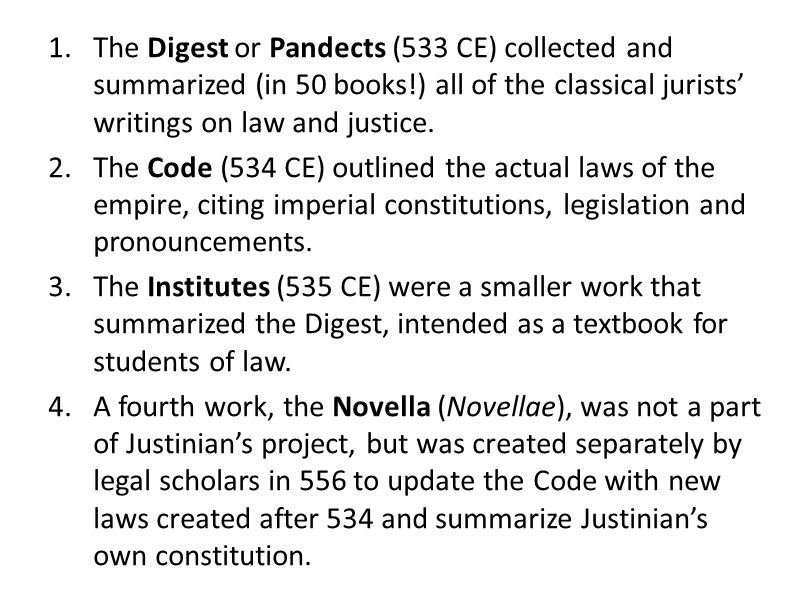
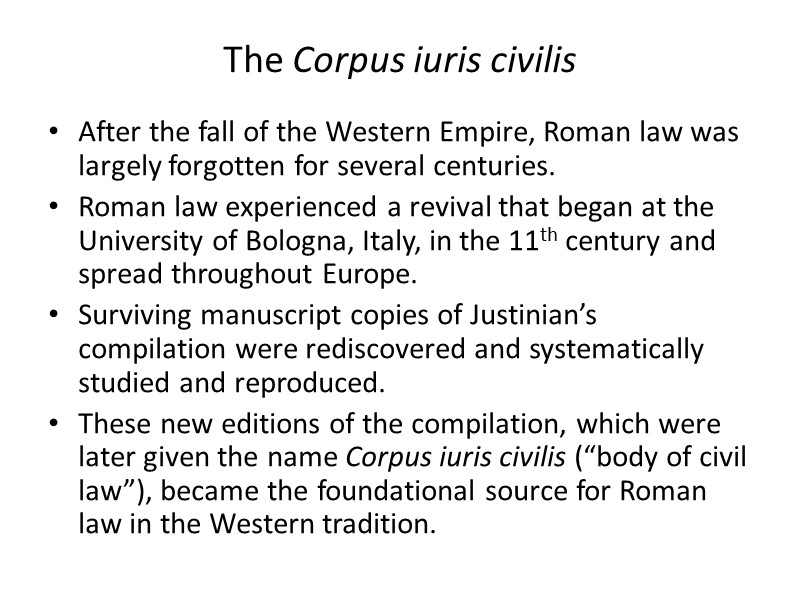


26834-003_introduction_to_roman_law.ppt
- Количество слайдов: 22
 Roman Law: Introduction
Roman Law: Introduction
 Origins of Roman law When the Roman Republic was established in 509 BCE, Romans already possessed a body of customary law (non-written law based on customs and traditions). This customary law ("ius") only applied to Roman citizens and was thus called "ius civile" (civil law, law of citizens). The citizens of Rome were divided into two classes: Patricians (noble people) and plebeians (members of the "plebs", the common people).
Origins of Roman law When the Roman Republic was established in 509 BCE, Romans already possessed a body of customary law (non-written law based on customs and traditions). This customary law ("ius") only applied to Roman citizens and was thus called "ius civile" (civil law, law of citizens). The citizens of Rome were divided into two classes: Patricians (noble people) and plebeians (members of the "plebs", the common people).
 Political struggle leads to codification In the early phases of Roman history, only the patricians could hold political offices. Certain public officials known as "pontifices" (pontiffs, lit. "makers of bridges") made decisions and ruled in questions of customary law. Since they belonged to the same class as the patricians, the plebeians felt that the pontiffs' decisions were often arbitrary and leaned too much towards the interests of the patricians. The plebeians pressed for the law to be written down, so that decisions could be clearly based in the law and not left to arbitrary decisions.
Political struggle leads to codification In the early phases of Roman history, only the patricians could hold political offices. Certain public officials known as "pontifices" (pontiffs, lit. "makers of bridges") made decisions and ruled in questions of customary law. Since they belonged to the same class as the patricians, the plebeians felt that the pontiffs' decisions were often arbitrary and leaned too much towards the interests of the patricians. The plebeians pressed for the law to be written down, so that decisions could be clearly based in the law and not left to arbitrary decisions.
 The Twelve Tables As a result, in 449 BCE a legal document called the Twelve Tables was published. This is the foundation of Roman law and remained the most important legal text in the Roman state for many centuries. The Twelve Tables included not only the law that applied directly to citizens, but also aspects of public law, religious law, and legal procedure. The Twelve Tables did not rewrite existing law or create new law. Rather, they simply transferred established customary law (ius) to a written form (lex).
The Twelve Tables As a result, in 449 BCE a legal document called the Twelve Tables was published. This is the foundation of Roman law and remained the most important legal text in the Roman state for many centuries. The Twelve Tables included not only the law that applied directly to citizens, but also aspects of public law, religious law, and legal procedure. The Twelve Tables did not rewrite existing law or create new law. Rather, they simply transferred established customary law (ius) to a written form (lex).

 Rome’s expansion is Roman law’s expansion The condition of citizen of Rome was a rather privileged one, e.g. since 167 BCE citizens didn't pay taxes. The expansion of the Roman state led to the necessity of developing law that applied also to the steadily growing number of non-citizens under Roman jurisdiction. Two new branches of law were developed: The "ius gentium" ("law of the peoples", "law of the nations"), and the "ius naturale" (natural law).
Rome’s expansion is Roman law’s expansion The condition of citizen of Rome was a rather privileged one, e.g. since 167 BCE citizens didn't pay taxes. The expansion of the Roman state led to the necessity of developing law that applied also to the steadily growing number of non-citizens under Roman jurisdiction. Two new branches of law were developed: The "ius gentium" ("law of the peoples", "law of the nations"), and the "ius naturale" (natural law).
 Ius gentium and ius naturale The ius gentium was the body of laws that applied to all people, foreigners and non-citizens as well as citizens, and was based upon the common principles and reasoning that civilized societies and humankind were understood to live by and share (the idea of a ius gentium was probably inspired by Stoicism). These laws common to all people were further understood to be rooted in the ius naturale, or natural law, a category of law based on the principles shared by all living creatures, humans as well as animals (such as laws pertaining to procreation, or physical defense against attack).
Ius gentium and ius naturale The ius gentium was the body of laws that applied to all people, foreigners and non-citizens as well as citizens, and was based upon the common principles and reasoning that civilized societies and humankind were understood to live by and share (the idea of a ius gentium was probably inspired by Stoicism). These laws common to all people were further understood to be rooted in the ius naturale, or natural law, a category of law based on the principles shared by all living creatures, humans as well as animals (such as laws pertaining to procreation, or physical defense against attack).
 The rise of the jurists As law became more complex along with the society that it governed, Roman rulers found themselves in need of a larger group of legal authorities to give order to the system of legal formulas and decisions. By the second half of the 3rd century BCE, a new professional group of specialists trained in law, the jurists, emerged to meet this demand. The jurists did not participate in administering the law, but rather focused on interpreting and generating formal opinions on the law, as the pontiffs had done earlier. The jurists were not paid for their services, but accumulated honor and fame.
The rise of the jurists As law became more complex along with the society that it governed, Roman rulers found themselves in need of a larger group of legal authorities to give order to the system of legal formulas and decisions. By the second half of the 3rd century BCE, a new professional group of specialists trained in law, the jurists, emerged to meet this demand. The jurists did not participate in administering the law, but rather focused on interpreting and generating formal opinions on the law, as the pontiffs had done earlier. The jurists were not paid for their services, but accumulated honor and fame.
 Roman judges In the Roman state, judges were not legal professionals but officials elected for one year, or private persons nominated by the parties in a trial. They needed professional advice: Another reason for the emergence and the success of the jurists. The jurists provided written technical advice to judges and others about the state of the law and interpretation of legal texts (the Twelve Tables or other). Their written advice was called the "responsa” (plural). This was the main source of legal thought and the basis of the jurists' professional training, as the judges were not legal professionals and their decisions were not considered as universally binding.
Roman judges In the Roman state, judges were not legal professionals but officials elected for one year, or private persons nominated by the parties in a trial. They needed professional advice: Another reason for the emergence and the success of the jurists. The jurists provided written technical advice to judges and others about the state of the law and interpretation of legal texts (the Twelve Tables or other). Their written advice was called the "responsa” (plural). This was the main source of legal thought and the basis of the jurists' professional training, as the judges were not legal professionals and their decisions were not considered as universally binding.
 The jurists The 1st Roman Emperor, Caesar Augustus, gave even more prestige to the jurists by granting a special official patent to the best of them as imperial advisors. Their writings evolved from the responsa to more elaborated legal treatises. An important figure is the jurist Gaius, who wrote a book called Institutes, a collection of legal principles and rules on all matters governed by private law. The Institutes were used both to educate students and to assist practicians in solving individual cases.
The jurists The 1st Roman Emperor, Caesar Augustus, gave even more prestige to the jurists by granting a special official patent to the best of them as imperial advisors. Their writings evolved from the responsa to more elaborated legal treatises. An important figure is the jurist Gaius, who wrote a book called Institutes, a collection of legal principles and rules on all matters governed by private law. The Institutes were used both to educate students and to assist practicians in solving individual cases.
 Aspects of Roman law (1) The important role of the jurists marks a clear difference with ancient Greek law. The jurists, however, had mostly practical interests, they didn’t fully develop a theoretical reflection on law and justice. They provided concepts and terms that made the basis of future theoretical development, especially during the late Middle Ages. Roman law introduces a basic distinction between public law (that is concerned with the interests of the state) and private law (concerned with the interests of individuals).
Aspects of Roman law (1) The important role of the jurists marks a clear difference with ancient Greek law. The jurists, however, had mostly practical interests, they didn’t fully develop a theoretical reflection on law and justice. They provided concepts and terms that made the basis of future theoretical development, especially during the late Middle Ages. Roman law introduces a basic distinction between public law (that is concerned with the interests of the state) and private law (concerned with the interests of individuals).
 Aspects of Roman law (2) Roman jurists, however, were mostly interested in private law. In private law, more than in the domain public law, are the most important contributions of the Roman jurists to political thought: In particular, within private law they elaborated the idea of legal limits to the extension of the power (iurisdictio) and the means of exercise of power by the magistrates. This represents an embryonic form of constitutionalization of power.
Aspects of Roman law (2) Roman jurists, however, were mostly interested in private law. In private law, more than in the domain public law, are the most important contributions of the Roman jurists to political thought: In particular, within private law they elaborated the idea of legal limits to the extension of the power (iurisdictio) and the means of exercise of power by the magistrates. This represents an embryonic form of constitutionalization of power.
 The notion of corporation A very important innovation by the Roman jurists was the development of the notion of corporation = an entity having an existence separate from that of its members and accordingly having rights and duties separate from theirs. Even here there is a clear Stoic influence in helping define a body that remains the same while its parts change, like an army or a people. This allowed to think of a state or municipality as a legal entity that exists apart from its members and having its own personality and will. In embryonic form this is a modern notion of the state, clearly separated from the people/citizens.
The notion of corporation A very important innovation by the Roman jurists was the development of the notion of corporation = an entity having an existence separate from that of its members and accordingly having rights and duties separate from theirs. Even here there is a clear Stoic influence in helping define a body that remains the same while its parts change, like an army or a people. This allowed to think of a state or municipality as a legal entity that exists apart from its members and having its own personality and will. In embryonic form this is a modern notion of the state, clearly separated from the people/citizens.

 Emperor Justinian I By the reign of the emperor Justinian I (ruled 527–565 CE), the vast territories of the Roman Empire in Europe, North Africa, and the East had for centuries been politically and culturally divided into the Western Empire and the Eastern, or Byzantine, Empire. The Western Empire had seen a series of Germanic invasions that led to its final collapse by 476 CE. So the Roman Empire under Justinian’s rule was the East – though during his reign, the emperor waged a successful campaign to reconquer some of the Western territories that had been lost to Germanic invaders, such as Italy and parts of Spain.
Emperor Justinian I By the reign of the emperor Justinian I (ruled 527–565 CE), the vast territories of the Roman Empire in Europe, North Africa, and the East had for centuries been politically and culturally divided into the Western Empire and the Eastern, or Byzantine, Empire. The Western Empire had seen a series of Germanic invasions that led to its final collapse by 476 CE. So the Roman Empire under Justinian’s rule was the East – though during his reign, the emperor waged a successful campaign to reconquer some of the Western territories that had been lost to Germanic invaders, such as Italy and parts of Spain.
 The Byzantine Empire around 550 CE (maximum extension)
The Byzantine Empire around 550 CE (maximum extension)
 Unifying the Empire through the Law Justinian faced the challenge of maintaining control and creating a sense of unity among far-flung territories where other cultures and languages besides Latin (such as Greek) predominated. One of the ways that Justinian sought to unify the empire was through law. Roman citizenship had been extended to the empire outside of Italy in the 3rd century CE, making inhabitants of large and distant territories “citizens of Rome” and subject to its civil law.
Unifying the Empire through the Law Justinian faced the challenge of maintaining control and creating a sense of unity among far-flung territories where other cultures and languages besides Latin (such as Greek) predominated. One of the ways that Justinian sought to unify the empire was through law. Roman citizenship had been extended to the empire outside of Italy in the 3rd century CE, making inhabitants of large and distant territories “citizens of Rome” and subject to its civil law.
 Justinian’s “Code” Justinian formed a commission of jurists to compile all existing Roman law into one body, which would serve to convey the historical tradition, culture, and language of Roman law throughout the empire. This compilation is sometimes referred to as “Justinian’s Code,” but in fact the Code was only one element. The compilation of Justinian actually consisted of three different original parts: the Digest (Digesta), the Code (Codex), and the Institutes (Institutiones). In the late 16th c., these books were called “Corpus iuris civilis” (“body of civil law”).
Justinian’s “Code” Justinian formed a commission of jurists to compile all existing Roman law into one body, which would serve to convey the historical tradition, culture, and language of Roman law throughout the empire. This compilation is sometimes referred to as “Justinian’s Code,” but in fact the Code was only one element. The compilation of Justinian actually consisted of three different original parts: the Digest (Digesta), the Code (Codex), and the Institutes (Institutiones). In the late 16th c., these books were called “Corpus iuris civilis” (“body of civil law”).
 The Digest or Pandects (533 CE) collected and summarized (in 50 books!) all of the classical jurists’ writings on law and justice. The Code (534 CE) outlined the actual laws of the empire, citing imperial constitutions, legislation and pronouncements. The Institutes (535 CE) were a smaller work that summarized the Digest, intended as a textbook for students of law. A fourth work, the Novella (Novellae), was not a part of Justinian’s project, but was created separately by legal scholars in 556 to update the Code with new laws created after 534 and summarize Justinian’s own constitution.
The Digest or Pandects (533 CE) collected and summarized (in 50 books!) all of the classical jurists’ writings on law and justice. The Code (534 CE) outlined the actual laws of the empire, citing imperial constitutions, legislation and pronouncements. The Institutes (535 CE) were a smaller work that summarized the Digest, intended as a textbook for students of law. A fourth work, the Novella (Novellae), was not a part of Justinian’s project, but was created separately by legal scholars in 556 to update the Code with new laws created after 534 and summarize Justinian’s own constitution.
 The Corpus iuris civilis After the fall of the Western Empire, Roman law was largely forgotten for several centuries. Roman law experienced a revival that began at the University of Bologna, Italy, in the 11th century and spread throughout Europe. Surviving manuscript copies of Justinian’s compilation were rediscovered and systematically studied and reproduced. These new editions of the compilation, which were later given the name Corpus iuris civilis (“body of civil law”), became the foundational source for Roman law in the Western tradition.
The Corpus iuris civilis After the fall of the Western Empire, Roman law was largely forgotten for several centuries. Roman law experienced a revival that began at the University of Bologna, Italy, in the 11th century and spread throughout Europe. Surviving manuscript copies of Justinian’s compilation were rediscovered and systematically studied and reproduced. These new editions of the compilation, which were later given the name Corpus iuris civilis (“body of civil law”), became the foundational source for Roman law in the Western tradition.
 The roots of all civil law systems All later systems of law in the West borrowed heavily from it, including the civil law systems of continental Europe, Latin America, parts of Africa. And Kazakhstan! To a lesser but still notable extent also the English common law system, from which American law is principally derived, borrowed from the Corpus iuris civilis.
The roots of all civil law systems All later systems of law in the West borrowed heavily from it, including the civil law systems of continental Europe, Latin America, parts of Africa. And Kazakhstan! To a lesser but still notable extent also the English common law system, from which American law is principally derived, borrowed from the Corpus iuris civilis.


